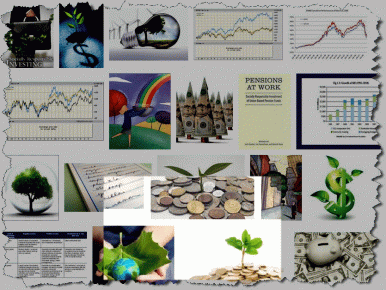In my role as a financial planner i am often asked questions about the retiring age in Australia. Interestingly, there is no simple answer – the age differs according to where your focus is – superannuation, tax or government age pension income support. Here’s a quick look at different versions of the retiring age in Australia.
What is the retiring age in Australia?
Firstly, let’s make it clear that there is no “retiring age” in Australia. In Australia, a person is allowed to retire whenever they want to. That may sound rather obvious but it isn’t really, as the idea of retirement in Australia is closely aligned, and often inextricably intertwined, with the area of superannuation. The enormous pool of money sitting in superannuation accounts results in a lot of marketing messages and misinformation that can cause some confusion for those not familiar with the super system. If you already have sufficient non-work income then logically you can stop work whenever you want, as your income will continue to meet your living and lifestyle costs.
The problem of course, is knowing whether or not your accumulated money or non-working income is sufficient to meet the lifestyle you would like to maintain. The solution is to know your costs and to understand your likely retirement expense budget. An alternative option would be to keep our expenses so low that retirement doesn’t need anywhere near as much cash or capital to bring it into your list of options!
Outside of inheritances or unexpectedly obtaining large amounts of money, most people take a long time to accumulate sufficient assets to enable them to stop working for anything more than a short period of time. So retiring is usually something done in later working years.
For a large chunk of Australia’s retiring population, Centrelink’s Age Pension income will be needed to help meet basic living costs, and so the government rules around the age that a person is entitled to receive that age pension can add to the confusion of just what constitutes the “retiring age in Australia”. Here’s a look at some of the ages that apply to the world of retirement.
Michael musing on the retiring age in Australia
Here’s a simplified Michael version, in which there are only three main categories of retirement age:
- If you don’t have many financial assets – that is, you will rely entirely on the age pension for your retirement living costs:
- The day you qualify for the age pension. That’s currently 65 but is moving to 67 and eventually 70.
- If you have sufficient super to tide you over until you qualify for the age pension:
- Retire after age 55 and you can access your super.
- If you are lucky enough to have a pot of money big enough, or daily expenses low enough, to not be worried about superannuation or government pensions:
- You’re in the fortunate few, and you are free to retire any time you like.
Readers who are married and have children often encounter a higher level of difficulty in planning a successful retirement age…

The difficulty of successfully planning for a specific retirement age [click link for possible correct image attributes]
Retiring age in Australia for Age Pension income support
The bulk of Australians retired or retiring today will qualify for some form of age pension income support from the Federal Government. In fact, most people will RELY on that income support to help them meet daily living and lifestyle expenses.
Now this is an area where government regulations and rules DO have an impact. Once-upon-a-time, women accessed the age pension at 60 and men at 65. That is now a fairy tale, as legislative change has altered the ages to 65 for both men and women.
Naturally, the rules are more complicated than a simple “age pension is paid once you turn 65”. The reason for this is that superannuation rule changes tend to be implemented gradually, with definitive “start dates”. Governments do this is to help people close to retirement gain some certainty. After all, those people have most likely been planning their retirement along rules that no longer apply, so although “grandfathering” can be complex and messy, it is fair. Back to the rules…
The previous Labor government had already implemented changes to gradually lift the eligibility age for the aged pension from 65 to 67, starting from 1 July 2017. Here’s a quick overview of the timetable:
- 1 July 2017 – Pension age 65 years and 6 months
- 1 July 2019 – Pension age 66 years
- 1 July 2012 – Pension age 66 years and 6 months
- 1 July 2023 – Pension age 67 years.
Men and women born prior to the 1st July 1952 are currently 62 or older, so they will become 65 prior to the change date, and will therefore still be able to claim the age pension entitlement (if they qualify) at age 65.
The 2014 Federal Government Budget included proposals to further increase the retirement age from 67 to 70. The idea is that the pension qualification age moves forward another 6 months for every two years started from 2023 through to 2035, at which stage it is 70. It’s worthwhile taking a moment to see how all of those proposals are likely to impact your own position. There are lots of calculators and tables out there in the internet world that can help you work out your personal qualification age for Centrelink’s age pension income support. The government website Moneysmart includes a quick calculator for just this purpose. The Australian Government Department of Social Services website also includes an overview of the age pension eligibility (although as of September 2014, it does not include any notes on the budget proposal to lift the qualification age still further).
i’ll be 72 at that time, so it’s not a worry to me – with five children including a youngster aged 2, it’s likely this financial planner will be working for his forever!
Although this post is about Australia’s retirement age to access the government age pension, it is worth noting the difficulties faced by all developed nations in dealing with their aging populations and society expectations about retirement age and pension entitlements. Here’s a link to a Wall Street Journal article from a few years ago that compared the US retirement age with that of Mexico, Japan and France.
Retiring age in Australia for superannuation
There are lots of tricks and tips relating to accessing your accumulated super benefits in Australia. Aside from the broader legislative requirements, there may be rules and thresholds specific to your own super fund that will have a big impact on when you can access your super and (sometimes more importantly) when you should access your superannuation.Some older funds especially, will include bigger payouts or other benefits that can be gained or lost depending on when you access the super account.
That’s my way of saying “be careful” and to make sure you don’t access your super without having a very good idea of the pro’s and con’s of different times and ways of accessing your account. Members of older “defined benefit funds” should take especial care, as lifetime income and indexing options can make a material difference to your super payout and therefore your retirement lifestyle. Everyone should also be wary of “early access schemes” that have flourished over the years, in which con-men set up sham arrangements to help people access their super earlier than the rules allow. The Tax Office quite rightly takes a dim view of such schemes and will not hesitate to put offenders in jail!
Australian super rules currently allow you to access your superannuation account money once you are fully retired, after the age of 55. In broad terms, you are able to access your superannuation account money after age 65, whether you have retired or not.
Tax impact of the retiring age in Australia
We’ve talked about the government age pension and we’ve talked about superannuation rules generally. The other key impact on most people’s retirement age decision-making will be the impact of any taxes on their income or capital.
Superannuation benefits are generally received tax-free by retirees accessing their accounts after age 60*. That is why many people now consider the earliest retirement age to actually be 60, when in fact, as mentioned earlier, it is possible to retire and access your super at age 55. Any tax on your accumulated retirement nest-egg is money no longer available to fund your retirement living, so it is logical that most people take into account the impact of tax on their retirement plans.
Australia’s marginal tax rate system also influences the date that people choose to retire. It’s not unusual for people who have always harbored a keen desire to retire on (say) their 63rd birthday, to defer retirement to the next financial year to help reduce the level of income that is likely to be taxed at higher tax rates. That may relate to investments outside of superannuation, where there may be a capital gain triggered or it may involve a lump of money is to be received at retirement that will, in turn, push the relevant financial years’ taxable income over the next tax threshold.
*As usual with super, there are rules and there are more rules about the rules… Although there is “usually” no tax payable on super benefits after age 60, there are exceptions – the most obvious being for those members of “constitutionally protected super funds”, where there will be a tax payable when benefits are received, regardless of age. Examples in Western Australia include the State Government, unfunded, West State and Gold State funds.
Again, i do need to add a word of warning here – remember the Great Disclaimer! Nothing on this site is to be taken to be personal advice. As i often state, my musings should not really be considered advice at all – they are my opinions and thoughts and observations only. The perils of changing circumstances, my limited authoring skills, and the vagaries of communication all combine to encourage me to ask that you treat my musings as highly as you should any other that you may read out there in the big, wide internet world – and that is, “cynically”. You should be cynical of anything you read online, and never use the information you see as a basis for investment or strategy decisions without first thoroughly investigating the likely impact on your own position. Tax, Superannuation and retirement are a complex mix in Australia, where slight changes in assumptions can lead to very large changes in outcomes, which is great if it goes in your favour but not so great if it costs you money!




